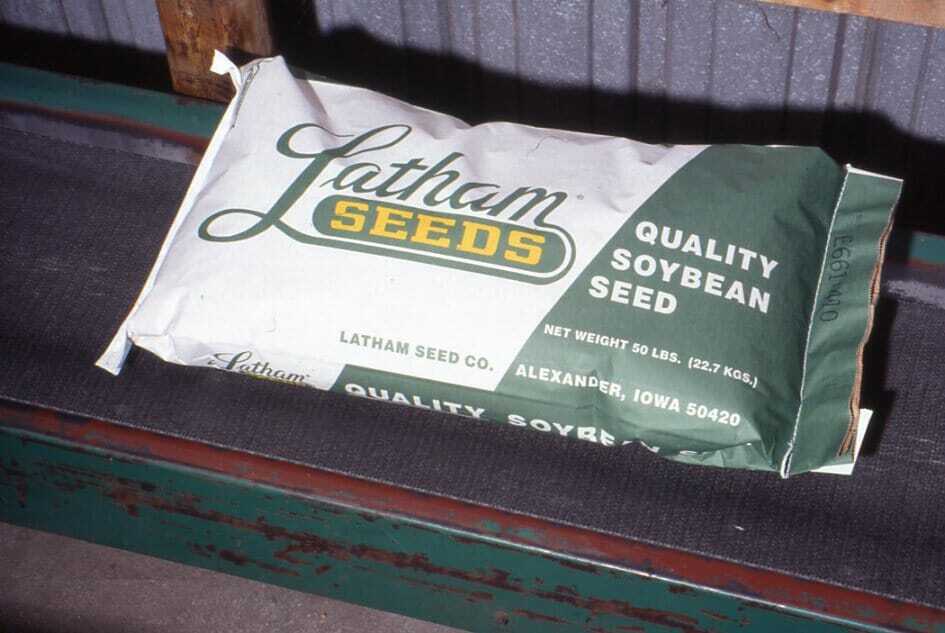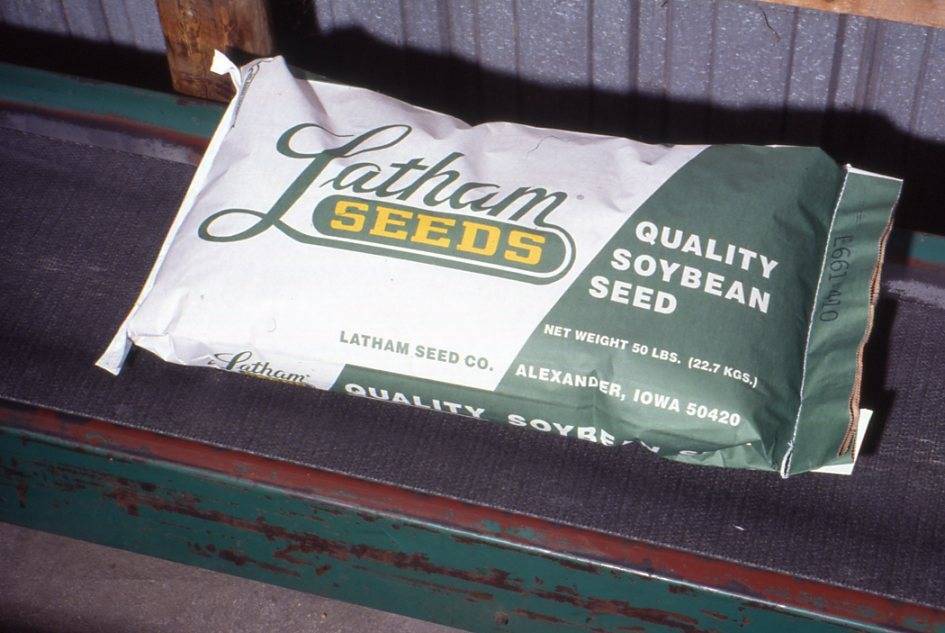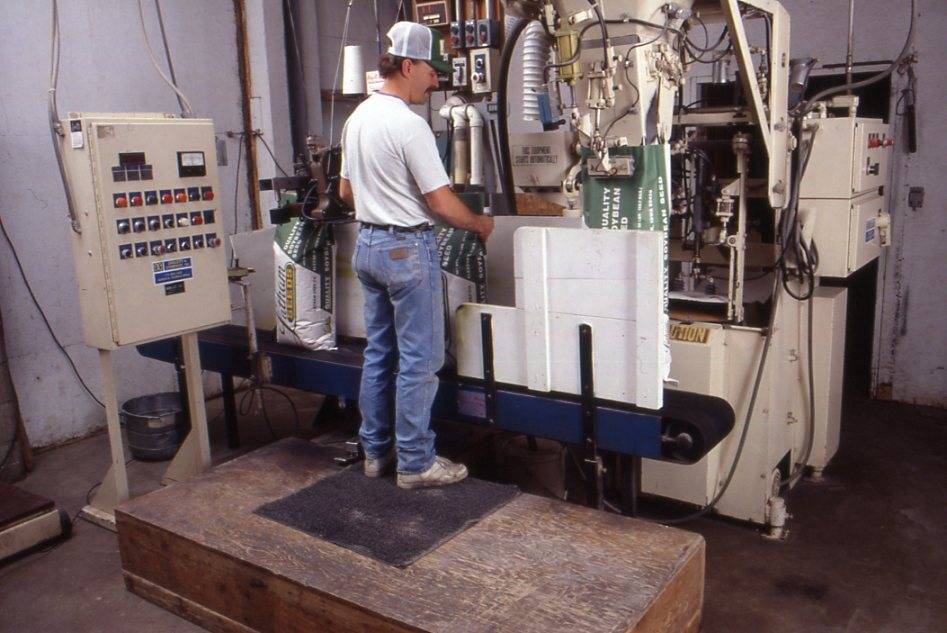Only top-grade soybeans go into a Latham® bag. Our team members take so much pride in what they produce, the word “quality” is stamped on every unit.
-
Latham Hi‑Tech Seeds
Use the Off Season to “Bring More Game” to 2014

While reading Corn and Soybean Digest recently, I came across an article about using our “off-season” time to prepare for the “2014 game” or growing season. Author Dean Heffta writes, “Every business – whether its seasons are set by the weather or not – needs to create and utilize an ‘off season’.”
LeBron James used off-season training to become a better low-post player after the Miami Heat lost the NBA tournament in 2011. James sought help from the great Hakeem Olajuwan to hone skills needed to improve his performance. As a result of James’ preparation and leadership, the Heat won back-to-back league championships in 2012 and 2013.
What can we do in the “off season” to prepare ourselves to win the game in 2014? Use your ‘off season’ time between harvest and planting:
- Review – Reflect upon the past season(s), and consider changes to improve those areas in 2014.
- Development skills – Try a new technology like Latham’s hallmark Seed-2-Soil program or download a new app like our 2014 seed guide.
- Plan – Step back from day-to-day operations. Consider where your farm is going. Explore ways to reach your goals. Plan for 2014.
An important role of every leader is scripting plays for the upcoming season. Take time to plan the details so everyone knows what’s next. While the process can seem a little overwhelming after a long, tiring growing season, simply for considering just one area of your operation that, if worked on, would make the biggest difference to your farm over time.
Click here for tips from Heffta on how to “execute your off season plan.” I’ll also be there to help in any way that I can, too. All you have to do is call! 1-877-GO-LATHAM (1.877.465.2842)
-
Latham Hi‑Tech Seeds
Start a Conversation about Farming… with Someone, Anyone!
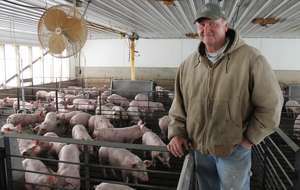
Last week I attended the Iowa Farm Bureau’s annual meeting in Des Moines. Dr. Jay Lehr, PhD, was the keynote speaker on Wednesday. He began by showing a video of himself, asking urban residents questions about farming. Needless to say, he received many funny looks at first from those unsuspecting folks in the videotape. Yet, every conversation turned into a good dialogue about food and farming.
When people are asked what they think about Iowa, Dr. Lehr says they immediately associate it with agriculture, corn and cattle. He doesn’t understand why residents of the number one corn and soybean state do not fully support agriculture – and he’s right! Iowa faces an anti-ag attitude.
Iowa farmers often find themselves in situations, defending their livelihoods. This state’s largest newspaper frequently runs stories blaming farmers for everything from the Dead Zone in the Gulf to ruining water for recreation! Dr. Lehr was very adamant that they are wrong. Too many people just do not understand modern farming. And to further make his point, he used one of my favorite phrases, “These are not Old McDonald’s farms!”
Dr. Lehr drove home the point that, as Iowa farmers, we must share how we farm. He challenged each of us to spend two hours per month, sharing our farming story with others. If we don’t tell our stories, someone else will – and we may not like it! Other groups, like the Humane Society of the United States (HSUS), will paint a picture based on misinformation and emotion. By doing so, they push their agendas and gain widespread national media attention.
Non-farmers are interested, as proved by Dr. Lehr’s video. The need for information is probably why so many of them buy into messages by the plentiful messages broadcast by HSUS and PETA. It’s also why we must start more conversations. If we let others tell our story, it’s not going to be the story we want told. Just think how much understanding could be created if each Iowa farmer spent two hours each month to help explain modern farming!
Think one family farmer can’t make a difference? Think again… just look at the impact the Peterson Farm Bros have made! Their Facebook page has 86,547 likes with 24,702 talking about them. Their parodies of pop songs filled with ag stats and farming know-how are wildly popular. “I’m Farming and I Grow It” parody they posted one year ago has had more than 8 million hits – 8,814,359 views to be exact! Their newest parody on Katy Perry’s “Chore,” posted about 21 hours ago and already has more than 70,000 views.
While we aren’t all as talented as the Petersons, we can start conversations by posting their videos on our Facebook pages and sharing some ag production stats. Articles posted on our Facebook pages also can start conversations by providing opportunities for others to ask questions, which is what happened when I posted a link Sunday to an article in The Des Moines Register.
Modern farming is a huge success story of how technology has very much improved the way we farm, keeping the environment cleaner in many ways. If you farm, start a conversation with a consumer. If you don’t farm, start a conversation with a farmer. Ask questions. Farmers can also listen. Who knows, you might hear a different story!
-
Latham Hi‑Tech Seeds
Throwback Thursday: Bagging Room
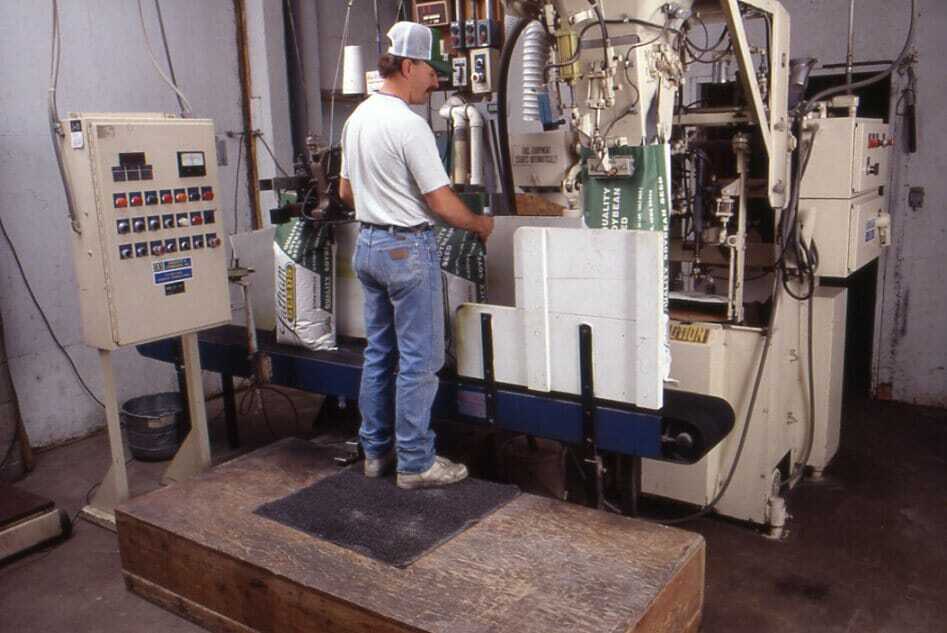
-
Latham Hi‑Tech Seeds
Wants Verses Needs

As the holidays approach, we’re constantly reminded about wants verses needs. Masterfully crafted advertisements have even convinced many of us that our “wants” are truly “needs.” The line between wants and needs has become blurred throughout our entire society! The fact that the 2012 Farm Bill has yet to pass, and 2013, is coming to a close is proof positive.

Photo Credited to Mrs. Ricca’s Kindergarten Website. Right about now you might be thinking, “Wow. Larry isn’t feeling the holiday spirit.” The truth is, I love the holidays. I enjoy spending time with my family and friends any day throughout the year, but especially between Thanksgiving and New Year’s Day. It’s just that life must go on – and chores must be done – regardless of what day it is or what season is upon us.
That’s why today I’m addressing a very serious topic that’s weighing on me heavily given recent events. Reader discretion is advised as I may not be politically correct at times. It’s a hot-button issue of mine that was pushed when I read a story over the weekend in The Des Moines Register.
On November 29, Register reporter Sharyn Jackson wrote, “Child care costs are holding back Iowa families.” A national study found that in 2012 a single mother in Iowa with one infant, earning the state median income for single-mother families, spent an average of $9,053, or 37.4 percent of her income, on child care. During the summer, when her two children are off from school, one single mother from Indianola spent more than 90 percent of her paycheck on daycare for just three days a week of care.
This is a story close to my heart because two of my kids are raising their families alone, and they struggle to make ends meet. It’s definitely tough for single-parent homes, which brings up the topic of divorce and the moral fight over whether it is right or wrong. Having personally gone through a divorce, and knowing the situation for both of my kids who have gone through one, I believe divorce is sometimes the best decision!
I understand that some things have been done in the past that cannot be ignored, and there is a reason I am so passionately against abortion. There is a reason I so love my instant family that was given to me on my 30th birthday. Some things in life were meant to test your faith, and how you handle these hardships make you who you are!
Then, what about parenthood before marriage? Yep, it also happens to good people. One of my very good friends is a conservative, Christian, wife and mother, who was once was a single, college-student mother on food stamps. After keeping quiet about it for a decade, this Food Stamps Mom broke her silence. Katie Pinke, on the Pinke Post, wrote:
I needed to build a life for my son. I didn’t want him to be a statistic. I wanted him to be in the most loving, supportive environment possible. Food stamps were a part of my solution to create a future for my son and me. Food stamps helped me for two years and childcare assistance just six months longer.
She goes on to write:
When I graduated from college, I earned a salary. I had health insurance. My son was four years old. I called my caseworker and told her I no longer needed to receive benefits. I was breaking free!
Did she congratulate me? Hardly.
She expressed her concern that I wouldn’t be in need anymore. She assured me I could still probably qualify for some services. The truth is, I never wanted to go back to social services. I never wanted to slide that food stamps card at the grocery store again… I wanted more for my son. I wanted freedom and ability to provide on my own.
Providing a temporary hand up, rather than a permanent hand out, was the original intent of the food stamp program, which is now called the Supplemental Nutrition Assistance Program (SNAP). Unfortunately, generations of families have become dependent on public assistance. The number of people on welfare has sky rocketed during the last six years.
Another sidebar thought: Does the income limit in place to qualify for food stamps hold people back from the Middles Class? It seems to reason to me if The Register article says income requirements to qualify for state childcare are holding people back from the Middle Class that the same holds true for SNAP. Parameters of the childcare assistance program prevent these low-income families from becoming part of the Middle Class. Government rules holding them back because these Americans are incented to either quit their jobs or not apply for jobs to qualify for assistance.
What about subsidized housing? I just read about the USDA making grants available.
The fact is, society has changed. Much of this change has been caused by government programs. Back in “the good old days,” we didn’t have so many government assistance programs. Families, churches, communities, and friends were there to help. And, people were motivated to change their circumstances by working harder and longer!
It’s been reported there is a dire shortage of skilled laborers in Iowa, and this shortage is holding back job creation. I know from personal experience that it’s next to impossible to run a successful business without skilled labor. Between the lack of skilled workers and no lack of new government regulation, creating new jobs is tough!
So what’s the solution?
- Lessen government regulation.
- Provide better and more access to education.
- Teach the younger generation right from wrong.
- Restore a sense of accomplishment from a job well done; restore the sense of pride from working hard and doing things for yourself.
- Don’t expecting the government or someone else to do it or give it to you!
There isn’t any one easy fix in reality, but the current path America is taking is not working: free food, free phones, free baby care, free housing, and the list goes on! My point is that government needs to get back to doing what it was designed to do, starting with protecting our borders and preventing enemy attacks! If we keep going deeper and deeper in to debt, the government will not be able to handle its requirements. Wants can no longer replace needs.
-
Latham Hi‑Tech Seeds
Creating Family Traditions and Holiday Memories


After they were married in 1938, Willard and Evelyn Latham made their home in rural Franklin County. Their former house – on an Iowa Century Farm – remains home to Latham Hi‑Tech Seeds. Family traditions are important to us, as one might guess since Latham Hi‑Tech Seeds has been family owned for more than 65 years. We’re proud to carry on the tradition of producing high-quality, high-yielding seed that Willard Latham began back in 1947.
With the holidays approaching, I find myself reflecting on family Christmas traditions. One tradition started by Willard’s wife, Evelyn Latham, was giving popcorn balls to each of her 12 grandchildren when the family gathered on Christmas. Everyone looked forward to receiving her handmade gifts of love, and I remember how special I felt the year I was given my very own popcorn ball. Isn’t it funny how such a little thing can mean so much?
One of my family’s traditions was tagging a live tree from the Boy Scouts Christmas tree farm in Greene and then decorating it the day after Thanksgiving. This year, on the day after Thanksgiving, John and I took our kids to a local farm where we picked out an Iowa grown tree. Friday was a beautiful, sunny winter’s day but crisp and cool enough outside that spiced apple cider was a welcome treat. We had fun decorating it later that afternoon, recalling special events and favorite family vacations as we hung the ornaments.

John Latham hangs an ornament on the company tree My favorites are the decorations made from pinecones and puzzle pieces made by our children; I love seeing their little faces smiling back at me from ornaments they made in grade school. My how they’ve grown and changed! As much as life changes, it’s good to know that the true meaning of Christmas remains constant and true.
How does your family keep Christmas meaningful?
-
Latham Hi‑Tech Seeds
#30Days Come to an End
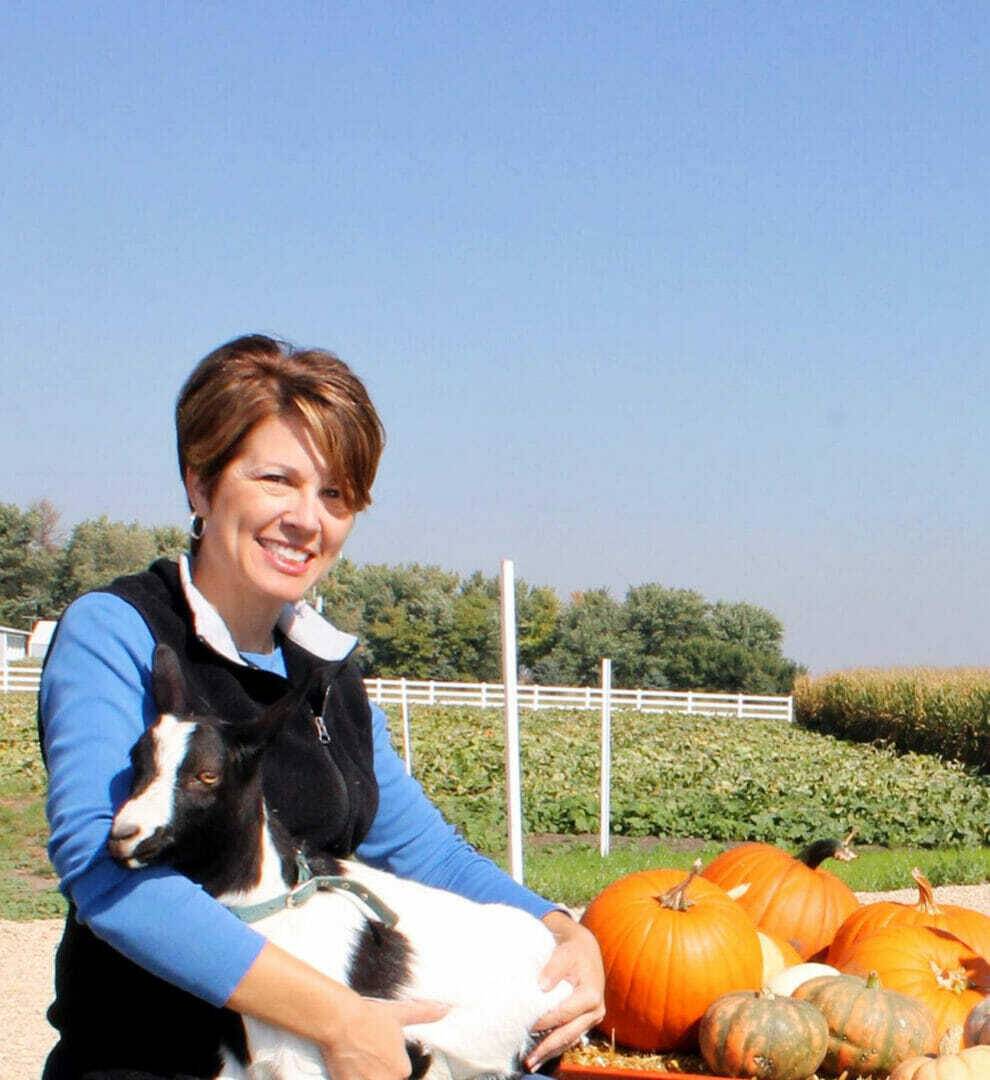
It seems like just yesterday when I was writing the intro post, announcing that I was joining ag journalist Holly Spangler and a group of #advocates on a 30-day blogging journey. Time flies when you’re having fun, they say! And these past 30 days were certainly filled with fun.
This blog series has provided me with an opportunity to virtually meet bloggers like Julie Van Manen and Crystal Blin, as well reconnect with Judy Grath and Katie Olthoff. As a result, I’ve come away with several new recipes. I’ve already made Judy’s Corn Casserole twice (it’s become a favorite of my daughter’s) and am looking forward to using Thanksgiving leftovers to try Katie’s Lemon Garlic Turkey Rotini with Zucchini. I hope you’ve enjoyed trying of these recipes, too!
Because the objective of the #30day challenge was for agriculturists to share what they do to help promote understanding among our non-ag friends, I also addressed harder-hitting topics like Local Foods, the Organic Food Trend and Sustainability. I appreciated help from guest bloggers like the Iowa Food & Family Project and Best Food Facts for dispelling myths and helping us reach consumers with positive messages.
“Wordless Wednesdays” and “Throwback Thursday” posts were so popular that we’re planning to continue them throughout the year. Of course, I’ll continue with our Farm Family Features on Fridays. I always look forward to meeting with farmers across the Midwest and telling their stories. Everyone has a story to tell, I always say. If you’d like to share yours with me, I’m up for another road trip!
-
Latham Hi‑Tech Seeds
Day 28: Throwback Thursday: Willard & Evelyn Latham

After they were married in 1938, Willard and Evelyn Latham made their home in rural Franklin County. Their former house – on an Iowa Century Farm – remains home to Latham Hi‑Tech Seeds.

-
Latham Hi‑Tech Seeds
Day 27: Wordless Wednesday

After conditioning, soybeans are bagged and stacked on pallets. Pallets of soybeans will be shipped this winter to our customers, who will plant them in the spring.

-
Latham Hi‑Tech Seeds
Day 26: So Much to Lose with EPA’s Proposed Ethanol Policy

Last week the U.S. Environmental Protection Agency (EPA) announced a new policy, backing off the amount of ethanol that must be blended into gasoline. This mandate, known as the Renewable Fuel Standard (RFS), was put into place when oil prices were soaring and our ability to import oil from unstable countries was in doubt.
Thanks in part to strong grain prices, agricultural states like Iowa have been a bright spot in the struggling U.S. economy. Now corn prices have dropped from $8 to around $4, and the EPA is proposing to withdraw a major market for U.S. corn.
“We are at a point of about the cost of production (for corn) and our concern is that reducing the Renewable Fuel Standard will actually drive the cost of corn below the cost of production, which will be damaging to our state’s economy,” said Iowa Governor Terry E. Branstad in an article published yesterday by The Des Moines Register. Preserving the RFS is extremely important to preserving this state’s farm economy.
Iowa leads the nation in biofuels production, with 42 ethanol refineries capable of producing over 3.8 billion gallons annually, and three cellulosic ethanol facilities under construction. In addition, Iowa has 12 biodiesel facilities with the capacity to produce nearly 315 million gallons annually.
With so much to lose, I’m having a tough time understanding just why the RFS change was even proposed! One excuse is the price of corn has been too high for the ethanol plants to make a profit, but I can easily dispel this myth. The price of corn is so low right now that it’s at or below the cost of production.
The market has adjusted, like it should, but the EPA is pulling the rug out from under the farmers that have made those adjustments. This is where I get really concerned… The U.S. government built the demand for corn with an ethanol mandate, and now administrators want to throw it away. That’s setting up farmers to fail! Why would we allow the EPA to screw up a good thing?
The EPA’s recent action reminds me of the Carter Administration’s embargo just before the Farm Crisis of the 80s. Our local towns and businesses suffered great hardships, and I remember the cost to tax payers when local economies suffered. Tax revenues were so low because no one was making any money.
Could history repeat itself? Consider for a moment the small town of Nevada in Central Iowa. Last Friday I attended a meeting there and was impressed with how prosperous this little town has become. Nevada is growing. New construction is underway. The economy is good. Why? Farmers have been making some money. (I know, terrible thing. Right?)
On the edge of Nevada is an ethanol plant. This plant is expanding to the next generation ethanol with cellulose. Now more people are needed to fill these jobs! But if the ethanol mandate is lowered, it will hurt the economy here.
With so much to lose, it’s no wonder about 200 people showed up with just one day’s notice to attend a rally in support of ethanol. Many Iowans were on hand to share their thoughts from biofuels industry leaders and farmers to local business owners and public officials. Everyone whom I heard speak had the same question, “Why would the EPA do such a thing?”
Increased soil erosion is also being blamed on ethanol production, but that’s simply not the truth. Opponents say the demand for more corn for ethanol has taken erodible acres out of conservation programs and into production. During a recent meeting with the editorial board from The Des Moines Register, U.S. Secretary of Agriculture Tom Vilsack refuted such claims. He told reporters that it’s inaccurate to say that just because CRP (Conservation Reserve Program) acreage has declined, all conservation has declined.
Vilsack goes on to say a record number of acres have been enrolled in conservation programs “under his watch.” More than 500,000 U.S. producers are engaged in record number of conservation programs including CSP (Conservation Stewardship Program) EQUIP, Wetlands Reserve, Wildlife Incentive and others.
Even some of our flattest, most productive farmland is at risk of erosion due to circumstances beyond our control. A series of weather events the last two years created even very flat farming ground to wash away, as you can see in this video I took on May 26. A whole year’s worth of rain fell in the spring!
Too many half-truths and mistruths are being spread about ethanol production. Be sure you get the facts!
“We are hopeful that in the comment period the agency evaluates this issue with a little more thought and ultimately modifies its proposal,” said Bob Dinneen, president of the Renewable Fuels Association, in an article published Nov. 24 by The Des Moines Register.
The EPA proposal will be open to a 60-day comment period, and the agency is expected to finalize the rule in the spring of 2014. Although the official comment period hasn’t yet opened, Governor Branstad says “it’s critically important for Americans to speak up now to push back on the EPA’s ruling.” He and Lt. Governor Reynolds have launched a new website to support the ethanol-biodiesel use. Comments submitted to ProtectTheRFS.com will be sent the EPA prior to the closing of the comment period.
Image Source: GasBuddy.com
